The rule and legacy of Harald Hardrada make him, according to many historians, the last king of the Vikings. He was the last ruler that represented the ruthless yet caring nature of the Vikings. These characteristics were also the very basis of his demise. While allowing his army to be a little looser than normal, he ran into a surprise attack. He still decided to fight the opposing English King Harold but was quickly outnumbered and killed.
His legacy goes way beyond his eventual death, however. Harald’s life was fascinating in every aspect and provides a great insight into the life of the Vikings.
Table of Contents
Who Was Harald Hardrada?
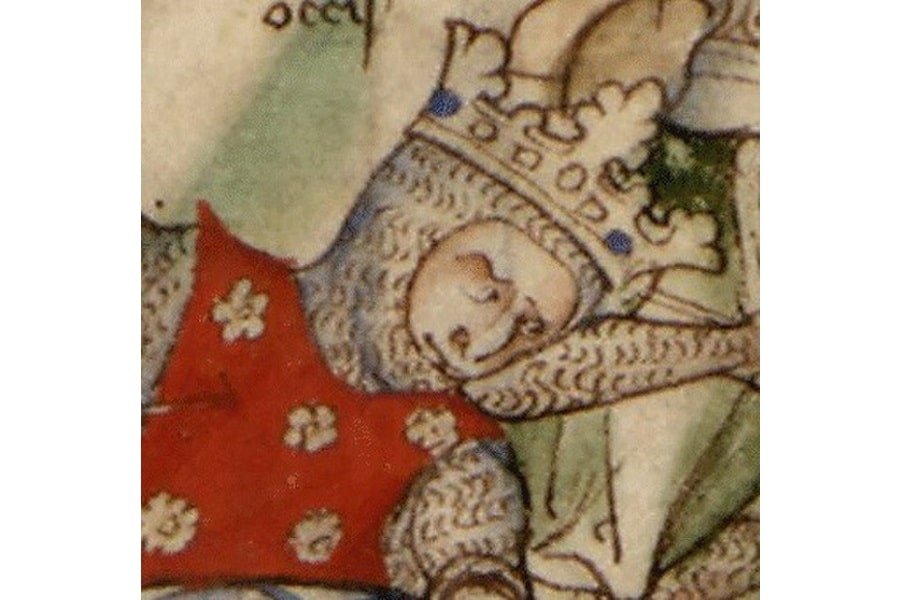
Harald Hardrada, or Harald Sigurdsson III, is often referred to as ‘the last great Viking ruler’. His actions positioned him as the archetype of what a Viking king was. Or rather, what many thought a real Viking king should act and look like. Harald was born in 1015 in Ringerike, Norway. After a life of war and blood, he died as King of Norway during the Norwegian invasion of England in 1066.
Most stories from the Viking age have been documented in different sagas, as is the case with the life of Harald. These sagas are both mythological and truthful. Some of the best mythology books in which the saga of Harald of Norway is described are written by Snorri Sturluson.
READ MORE: Norse Mythology: Legends, Characters, Deities, and Culture
How Did Harald Hardrada Get His Name?
The sole ruler of Norway was born as Harald III Sigurdsson. He obtained his nickname Harald Hardrada only after his installment as king. It is derived from Old Norse and is officially spelled Harald Harðráði or Harald Hardråde. Hardrada can be translated to ‘hard in counsel’, ‘resolute’, ‘tough’, and ‘severe’.
So it’s not hard to imagine what kind of ruler the last Viking king was. His coldly ruthless approach to war was widely documented. But, being referred to as a ‘severe’ leader wasn’t necessarily what Harald preferred. He actually wanted to be named Harald Fairhair, referring to his beautiful and long hair.
Formerly, the sagas describe Harald Fairhair as a totally distinct person. Nowadays, historians believe they are one and the same. Other nicknames for the last Viking king include ‘Burner of Bulgars’, ‘the Hammer of Denmark, and the ‘Thunderbolt of the North’.
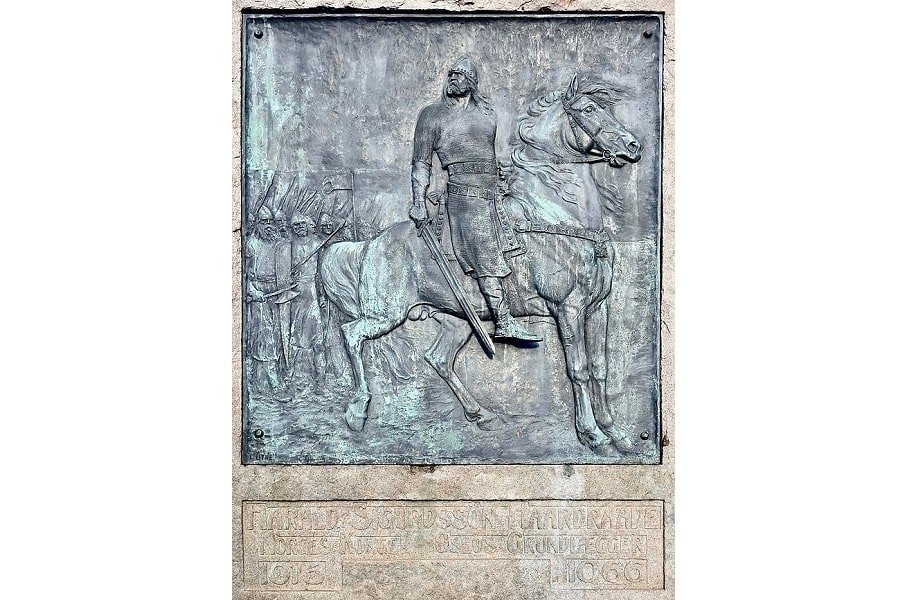
Was Harald Hardrada the Viking King?
Not only was Harald Hardrada a Viking King, but he was also actually considered the last of many Viking rulers. Sure, his sons were his successors, but they didn’t install the same regime that was so characteristic of the Viking age: care for each other but show no remorse against anyone else. Harald was a great warrior and aggressor, but after his reign, nobody was really interested in this type of leadership anymore.
What is Harald Hardrada Famous For?
Harald Hardrada is most famous for the battle he died in: the Battle of Stamford Bridge. Also, because of his war-minded aspirations, he became one of the most famous members of the Varangian guard. After a couple of years with the unit, he was able to fight as the King of Norway and (unsuccessfully) claim the Danish throne in 1064. Later, he died battling for the English throne in 1066.
Basically, the whole life of Harald is quite legendary. Harald Hardrada was a remarkable boy when he grew up. His actions were largely inspired by his half-brother Olaf II Haraldsson, or Saint Olaf. While his actual brothers preferred to take care of the farm, Harald had grander aspirations and wanted to follow his war-minded half-brother.

Earliest Battles as Harald Sigurdsson
Before Harald ever got his now famous epithet ‘Hardrada’, he just went by his own name: Harald III Sigurdsson. Under this name, Harald gathered his first actual army.
Following a revolt in 1028 and a battle for the throne of Norway, Harald’s half-brother Olaf was forced into exile. In 1030, he’d return to the lands of Norway; a return that was highly anticipated by the then 15-year-old Harald.
He wanted to welcome Saint Olaf in the nicest way possible, so he gathered 600 men from the Uplands to meet Olaf with his newly found army. While Olaf was impressed, he knew the 600 men weren’t enough to reinstall himself on the Norwegian throne.
At the time, the throne was occupied by Cnut the Great: one of history’s most famous Vikings. Olaf knew that he needed quite the army to overthrow him.
During the Battle of Stiklestad on the 29th of July 1030, Harald and Olaf fought alongside each other with a slightly bigger army than the one initially gathered by Harald. Their attack was unsuccessful, to say the least. The brothers were defeated in the worst way; Olaf was killed and Harald was badly wounded.
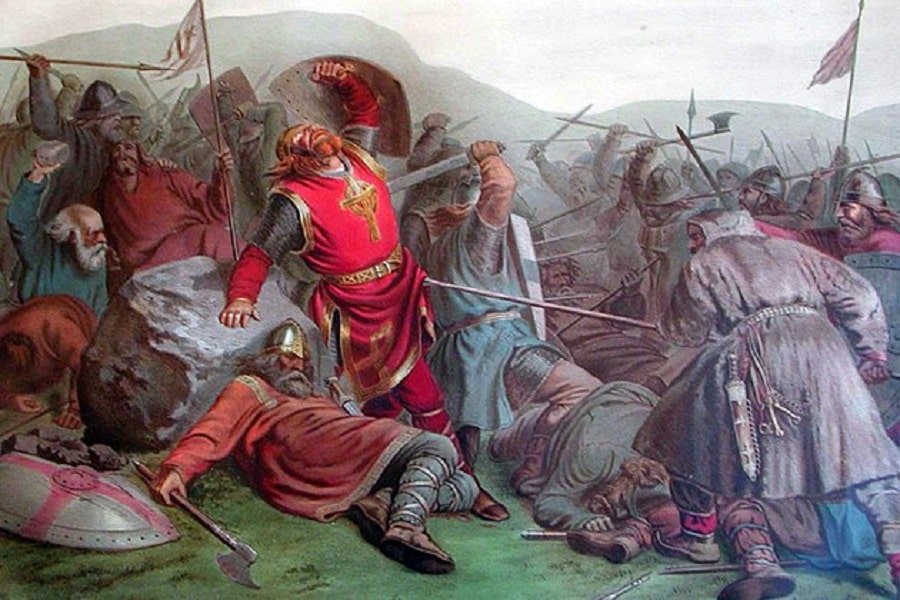
After the Battle of Stiklestad
One way or another, Harald managed to escape with the help of the Earl of Orkney. He fled to a remote farm in Eastern Norway and stayed there for his recuperation. It is believed that he was recovering for about a month, after which he ventured north into Swedish territory.
After spending a year traveling around, Harald arrived in Kievan Rus’, which is a predecessor of the Russian empire that consisted of parts of Russia, Ukraine, and Belarus. The center of the state was the city of Kyiv. Here, Harald was welcomed with open arms by Grand Prince Yaroslav the Wise, whose wife was actually a distant relative of Harald.
Warrior in Kievan Rus
However, that was not the reason that Yaroslav welcomed him with open arms. Actually, Olaf II already came before Harald to Grand Prince Yaroslav the Wise and asked him for help after his 1028 defeat. Because the Grand Prince was so fond of Olaf, he was very willing to also accept his half-brother Harald.
A reason for accepting him also relates back to the dire need for capable military leaders, which Yaroslav hadn’t had in a long time. He saw the military potential in Harald and transformed him into one of the most prominent leaders of his forces.
In this position, Harald fought against the Poles, the Chudes in Estonia, and the Byzantines; the ones he would later join. While Harald did an excellent job, he was not able to build something for himself. He was just the servant for another prince, a distant relative, without possessions to provide a dowry for a potential wife.
He was eyeing Yaroslav’s daughter Elizabeth, but he simply couldn’t offer her anything. For this reason, he decided to venture out of Kievan Rus and further to more Eastern territories.
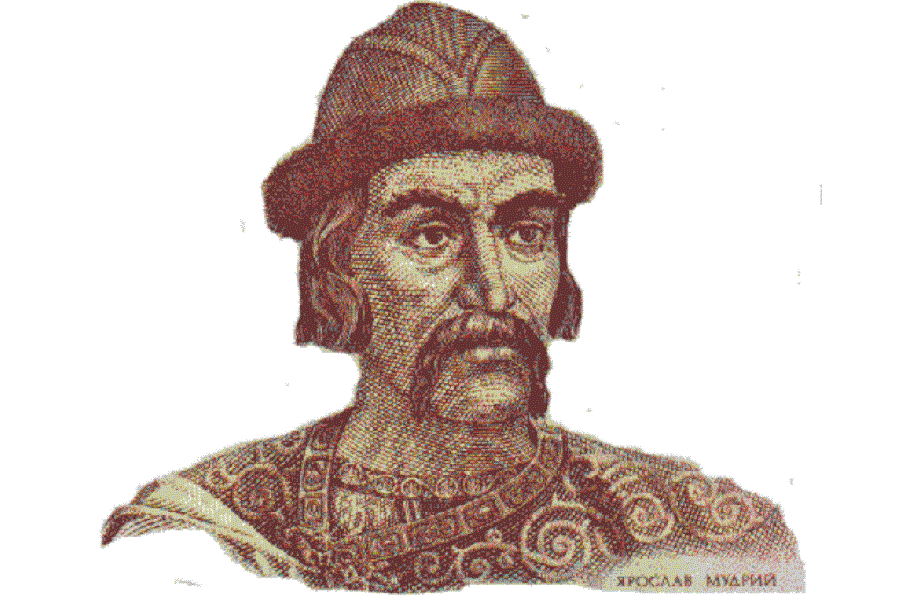
Harald Hardrada and the Varangian Guard
Together with hundreds of other men, Harald sailed all the way to Constantinople, the capital of the Byzantine Empire. In the Byzantine capital, he decided to join the Varangian Guard, which was an elite group of fighters with predominantly Viking heritage. Its men served both as combat troops and as imperial bodyguards.
The Varangian Guard was characterized by their typical weapon, a two-handed ax. Other than that, they had some notorious drinking habits and drunken shenanigans. Because of this, the guard was often referred to as ‘the emperor’s wineskins’.
One of the first battles that Harald Hardrada was involved in was the war with the Fatimid Caliphate, which ruled all of North Africa, the Middle East, and Sicily. In the summer of 1035, at just 20 years old, Harald was involved in a sea battle in the Mediterranean between the Varangian Guard and the warships of the Arab forces.
Unexpected Surprises
For both the Arabs and the Varangian guard there were some surprises during this 11th century battle. The Arabs simply hadn’t seen anything like the Vikings before, with their six-foot axes. On the other hand, Harald of Norway hadn’t seen anything like Greek fire before, which is a medieval version of napalm.
The battle was a tough one for both sides, but the Vikings eventually walked away victorious. Also, Harald was actually the one leading the reckless raging Vikings and rose through the ranks because of it.
Even before the peace treaty between the Arabs and the Byzantine Empire was signed, Harald Hadrada became the leader of the Varangian Guard. Part of the peace agreement was the restoration of the Church of the Holy Sepulchre, which was located in Jerusalem; a territory occupied by the Arabs at the time.
A Byzantine delegation was allowed to voyage to the site of Christ’s baptism right in the middle of the Jordan Valley. The only problem was that the desert was full of bandits and looters.
Still, this wouldn’t be a problem for Harald. After clearing the road to Jerusalem of bandits, Harald Hardrada washed his hands in the River Jordan and visited the site of Christ’s baptism. That’s about the furthest east that the eventual Viking King would go.
New opportunities with great amounts of treasure were part of the motivation for Harald to head back West again. After an expedition to modern-day Sicily, he was able to capture a great amount of gold and silver.
While Harald was able to maintain his treasures, the Byzantine empire was reduced greatly due to attacks from the Normans and Lombards in 1041.
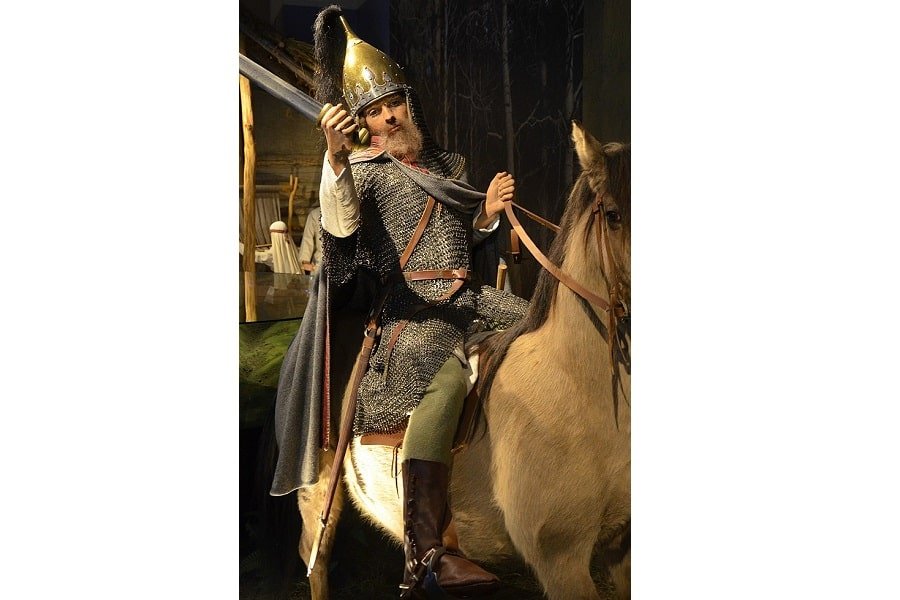
Return to Kyiv Rus and Scandinavia
With a myriad of combat experience, but no real army, Harald would return to Kievan Rus. By now, he had more than enough money to provide a dowry for Yaroslav’s daughter Elisabeth. Hence, he married her.
Not long after, however, Harald returned to his homeland in Scandinavia to reclaim the Norwegian throne; the one that was ‘stolen’ from his half-brother. In 1046, Harald Hardrada officially arrived in Scandinavia. He had quite the reputation by that point and was quick to use it to his advantage.
The Norwegian-Danish King Magnus I was in power in Harald’s homeland at Harald’s time of arrival. King Magnus I was actually fighting a battle for the Danish throne with a guy by the name of Svein Estridsson, or Sweyn II.
Harald joined forces with Svein and also reached out to the Swedish king for reaching an agreement about all Scandinavian territory. After Magnus I offered Harald co-kingship of Norway, Harald joined forces with Magnus and betrayed Svein in the process.
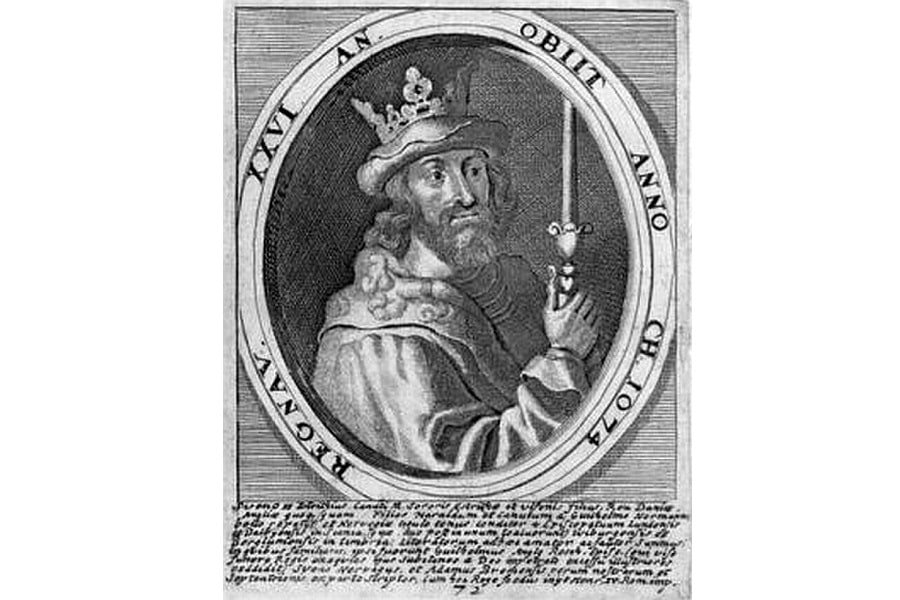
King Harald Hardrada
Harald Hardrada was fighting on the other side of the continent for over 10 years. Still, when he returned to his homeland he was offered a co-kingship in a matter of weeks, or maybe even days. It really speaks to the importance and status of Harald at the time.
Also, King Harald didn’t have to wait long until he was the sole ruler of Norway. Only a year after Harald returned, Magnus died. It’s not entirely clear why Magnus died so soon, but it’s probable that he died from the injuries he received when fighting with Svein. Legend has it that the king of Norway and Denmark fell off his horse and died of his injuries.
Dividing Norway and Denmark
However, Magnus still had something to say about the division of the territories. Actually, he granted King Harald only Norway, while Svein was granted Denmark. As expected, the great Harald Hardrada wasn’t content with this and battled Svein for the lands. He was quick to destroy many cities on the Danish coast, but without actually venturing further into Denmark.
It seems a bit unnecessary on the side of Harald Hardrada to simply destroy the Danish coast and return home afterward. Historians argue that it probably was to show the Danish population that Svein was incapable of ruling and protecting them.
King Harald aimed for a somewhat natural surrender instead of conquering the whole territory. It’s not like he actually acknowledged Svein, by the way. To him, it was just a territory he lent out to his contemporary. Still, in 1066, they were able to come to a peace agreement.
While he was never able to officially become the King of Denmark, his later ambitions for England would have an infinitely greater influence on the course of European history.
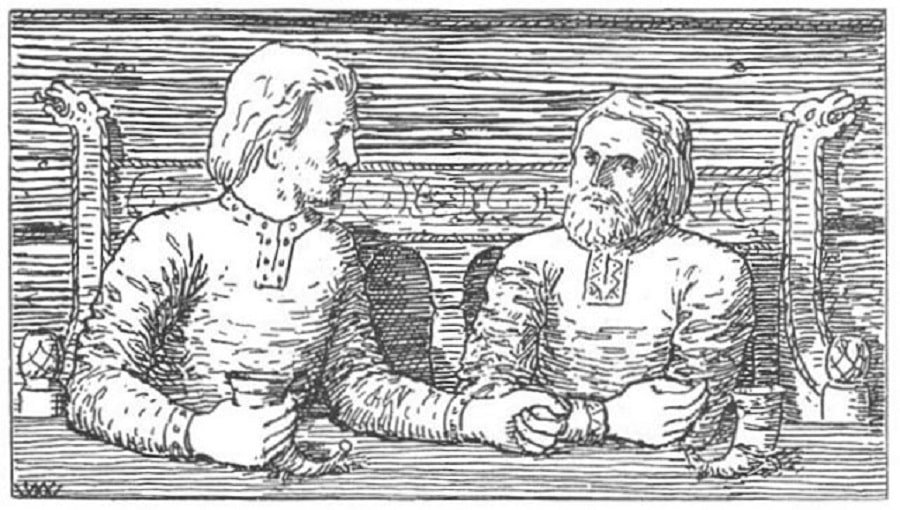
What Happened to Harald Hardrada?
Harald’s claim to the English throne was quite complex, but it did result in a massive invasion of English territory. At the time, the late King Edward the Confessor had just passed away and Harald started fighting the one who claimed the English throne: King Harold Godwinson. Unfortunately, during the Battle of Stamford Bridge, Harald Hardrada was killed by an arrow to his throat.
But, how did it come to this point?
It starts with Harald’s claim to the English throne. King Canute – the one that Harald fought in his very first battle and made him go into exile – had a son called Harthacnut, who eventually became the King of Denmark and England.
It was promised that Magnus I would obtain kingship over England after the death of Harthacnut. While it was King Edward the Confessor that reigned over England after the death of Magnus I, Harald felt betrayed since he was Magnus’ successor.
In Harald’s eyes, the throne was promised to the King of Norway, meaning that the throne of England belonged to him. While he accepted the reign of King Edward the Confessor, the subsequent King of England – Harold Godwinson was a bit too much for Harald.
Or rather, it was a bit too much for the brother of the English King by the name of Totsig Godwinson, who pointed out to King Harald Hardrada that he still had a claim to the English throne after the death of Magnus I. King Harald wasn’t really planning on invading England, but eventually was convinced by his own army and Totsig.
The Battles that Changed the Course of European History
At the time of the invasion, in 1066, the Norwegian King Harald was 50 years old. As King of Norway, he sailed in 300 longships to the English coast, with somewhere between 12,000 and 18,000 men on his side. On the 18th of September, Harald met with Totsig and his army, after which they started planning their first attack on the self-crowned King of England.
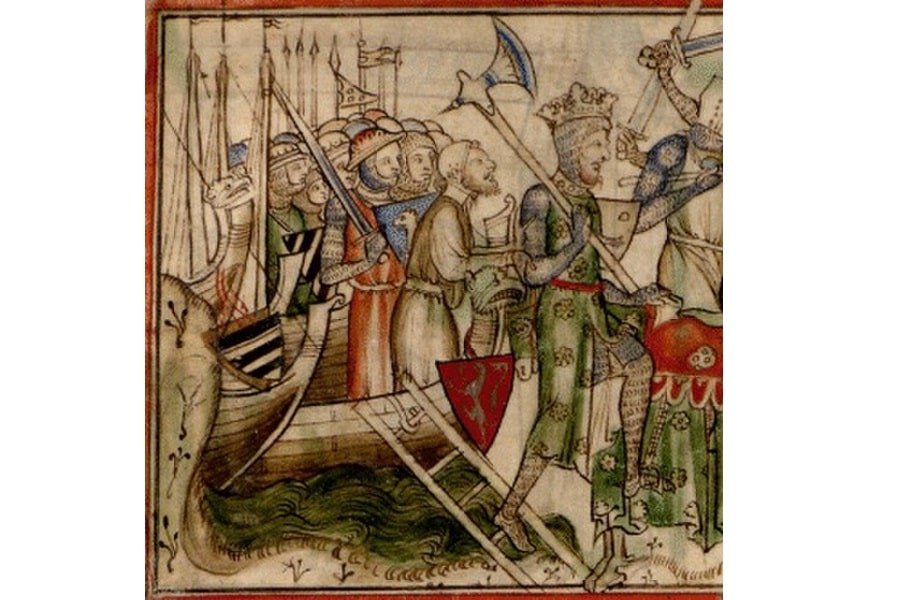
Battle of Gate Fulford
In the Battle of Fulford on the 20th of September 1066, the Norwegian King and Totsig fought Edwin and Morcar, two English nobles who stole Totsig’s seat as the Earl of Northumbria. They were Totsig’s arch-rivals since they came from the house of Ælfgar.
However, Edwin and Morcar weren’t really prepared well for a battle. They anticipated an attack by Harald and Totsig but thought they would land in a different location.
Eventually, the last Viking King and his partner in crime landed at Riccall. After successfully landing on the soil of Edwin and Morcar, the battlefield of choice was Gate Fulford; about 800 meters (half a mile) from York.
Morcar’s army was first to attack, but the army that was fighting in the name of the Norwegian throne was quick to demolish Morcar’s forces. They successfully separated the two armies of Edwin and Morcar, after which Harald’s army was able to attack from three different sides.
After a bit, Edwin and Morcar fled the scene and the handful of survivors ran to the nearby city of York. However, it was exactly the city of York that would provide a good basis for a following attack. Harald and Totsig marched to the city in order to take it.
According to the legend, the casualties of the battle were so great that the Norwegians could march over the dead corpses all the way to the city of York. On the 24th of September, the city surrendered.
The Battle of Stamford Bridge
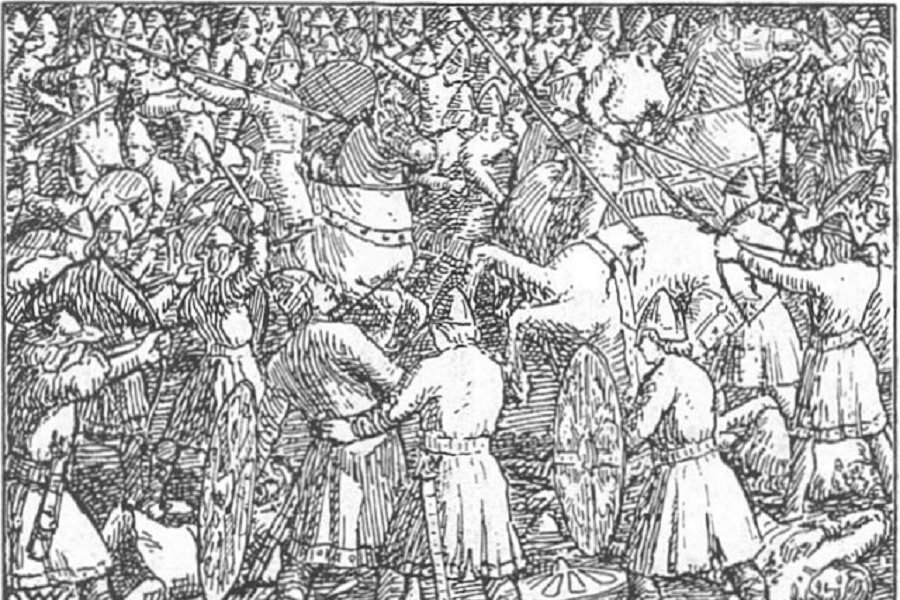
The ruler of England, Harold Godwinson, quickly received the news as soon as Harald and Totsig entered English territory. He also was able to react in no time. While he had been focussing on a potential attack by William the Conqueror from Normandy, he now turned to York and started to march there with his troops.
And a march it was. In just four days, the King of England covered almost 300 kilometers (185 miles) together with his whole army. He planned on surprising Harald of Norway and his companion in Stamford Bridge, a location that was picked for the exchange of hostages as part of the surrendering treaty with York.
The Mistakes that Led to the Demise of Harald Hardrada
Harald was still high on adrenaline from his victory in Gate Fulford. His confidence was an important factor when it came to his defeat. Because of it, and because of the long journey and hot weather, Harald ordered his army to leave their armor behind on the trek to Stamford Bridge. Also, they left their shields behind.
Harald really thought he had no enemy to contend with, and he actually only took about a third of his army. Arriving at Stamford Bridge, the army of Harald saw a great cloud of dust: the approaching army of Harold Godwinson. Harald, of course, couldn’t believe it. Still, he only had himself to blame.
While Totsig suggested returning to Riccall and York, Harald thought it would be better to send couriers back and tell the left-behind army to come at all speed. The battle was brutal and saw a couple of phases. While the Vikings had an excellent defense, they couldn’t resist the English army, who eventually was able to circle around the Norwegians.
Still, without the remaining part of his army and their shield, the army of Harald Hardrada was quickly cut down to a couple of hundred. Not long after, Harald Hardrada was killed in the battle with an arrow through his windpipe.
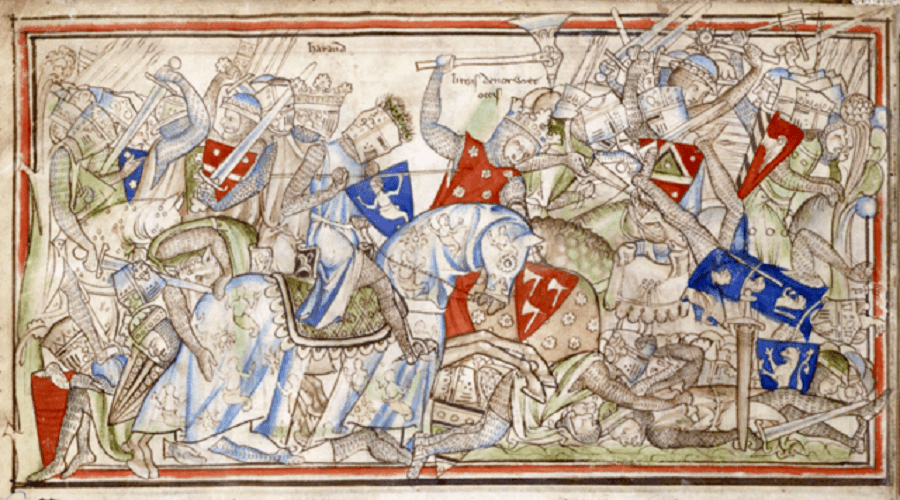
After Harald’s Death
The death of Harald didn’t immediately stop the battle. Totsig promised to conquer the opposing army, with all the backup he could get from the remaining soldiers. It was in vain, however. More ruthless combat would emerge, and the Norwegian army was quickly wiped as a whole. The Battle of Stamford Bridge meant the end of the Viking age.
The fight with Harald and Totsig indirectly helped William the Conqueror come to power. If the army of the English King wasn’t so fatigued, they probably would have contested William’s army way better. Now, however, Wiliam could easily take the position of sole ruler of England just a couple of weeks after the Battle of Stamford Bridge.